The Sandy Bridge Review: Intel Core i7-2600K, i5-2500K and Core i3-2100 Tested
by Anand Lal Shimpi on January 3, 2011 12:01 AM ESTVideo Encoding Performance
Our DivX test is the same DivX / XMpeg 5.03 test we've run for the past few years now, the 1080p source file is encoded using the unconstrained DivX profile, quality/performance is set balanced at 5 and enhanced multithreading is enabled.
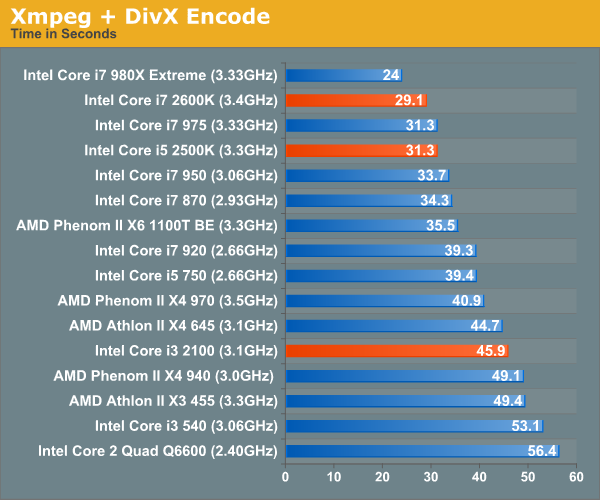
Despite the greatness that is Quick Sync, there are no editing/high quality transcode tools that support Intel's hardware transcode engine. Luckily, Sandy Bridge is still very fast when it comes to software encoding. Our WME test only shows minimal gains thanks to the architectural improvements however.

Graysky's x264 HD test uses x264 to encode a 4Mbps 720p MPEG-2 source. The focus here is on quality rather than speed, thus the benchmark uses a 2-pass encode and reports the average frame rate in each pass.
Other than the Core i7 980X, there's nothing quicker than Sandy Bridge. The Core i7 2600K is 10% faster than the Core i7 975, and the 2500K easily outpaces its Lynnfield rivals. The i3 2100 is quicker than its predecessor, however not by much. In these heavily threaded situations, AMD's Athlon II X4 645 is a better option than the 2100.
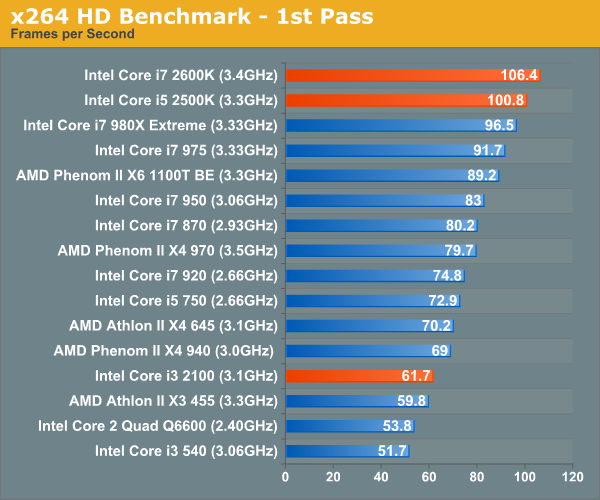
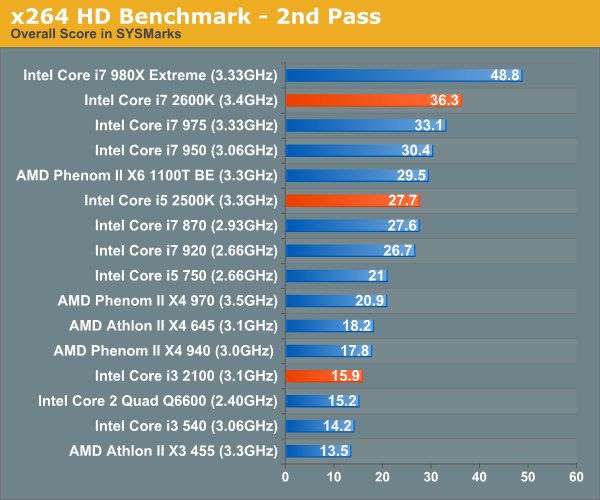
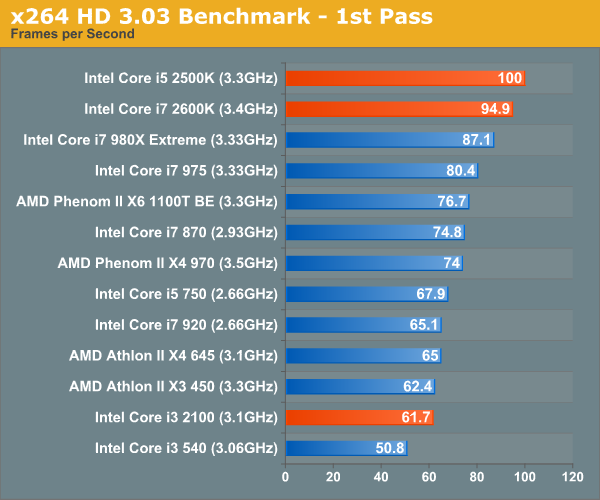
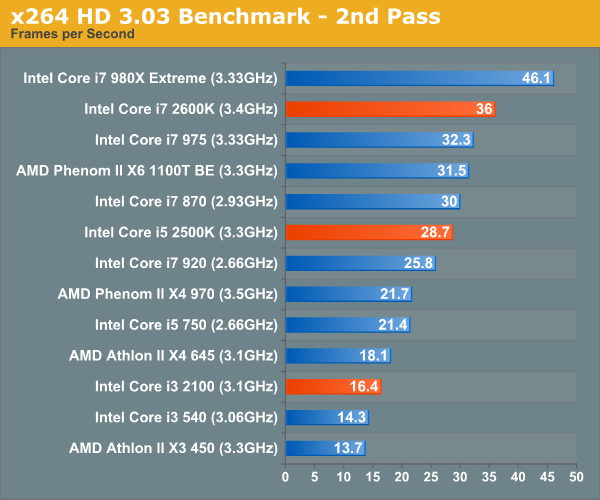










283 Comments
View All Comments
7Enigma - Monday, January 3, 2011 - link
Do you happen to remember the space heater.....ahem, I mean P4?DanNeely - Monday, January 3, 2011 - link
I do. Intel used bigger heatsinks than they do for mainstream parts today.panx3dx - Monday, January 3, 2011 - link
The article states that in order for quick sync to function, a display must be connected to the integrated graphics. Since p67 does not support the IGP, then quick sync will be disabled???panx3dx - Monday, January 3, 2011 - link
Opps, just saw Doormat already asked the question on page three, and I can't find a way to edit or delete my post. However no one has yet to give a clear answer.Next9 - Monday, January 3, 2011 - link
There is not any problem with BIOS and 3TB drives. Using GPT you can boot such a drive either on BIOS or UEFI based system. You should only blame Windows and their obsolete MS-DOS partitioning scheme and MS-DOS bootloader.mino - Monday, January 3, 2011 - link
Microsoft not supporting GPT on BIOS systems (hence 3TB drivers on BIOS systems) was a pure BUSINESS decision.It had nothing to do with technology which is readily available.
mino - Monday, January 3, 2011 - link
In the table there is "N" for the i3 CPUs.But in the text there is: "While _all_ SNB parts support VT-x, only three support VT-d"
Could you check it out and clarify? (there is no data on ark.intel.com yet)
mczak - Monday, January 3, 2011 - link
It's not exactly true that HD3000 has less compute performance than HD5450, at least it's not that clear cut.It has 12 EUs, and since they are 128bit wide, this would amount to "48SP" if you count like AMD. Factor in the clock difference and that's actually more cores (when running at 1300Mhz at least). Though if you only look at MAD throughput, then it is indeed less (as intel igp still can't quite do MAD, though it can do MAC).
It's a bit disappointing though to see mostly HD2000 on the desktop, with the exception of a few select parts, which is not really that much faster compared to Ironlake IGP (which isn't surprising - after all Ironlake had twice the EUs albeit at a lower clock, so the architectural improvements are still quite obvious).
DanNeely - Monday, January 3, 2011 - link
That's not true. Each AMD SP is a pipeline, the 4th one on a 69xx (or 5th on a 58xx) series card is 64 bits wide, not 32. They can't all be combined into a single 128 (160, 196) bit wide FPU.kallogan - Monday, January 3, 2011 - link
I'll wait for 22 nm. No point in upgrading for now